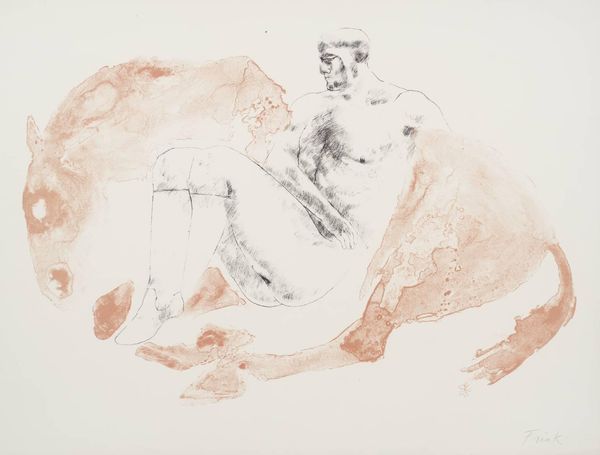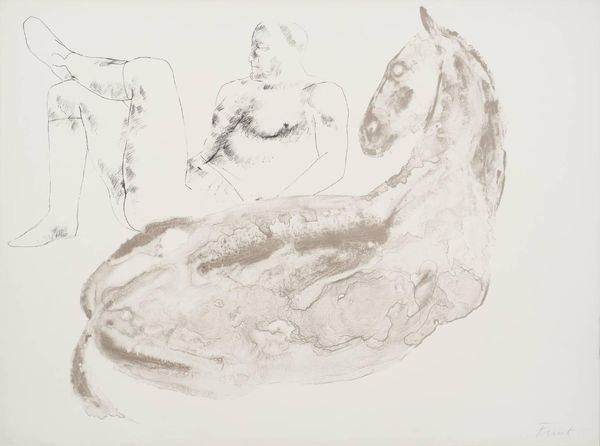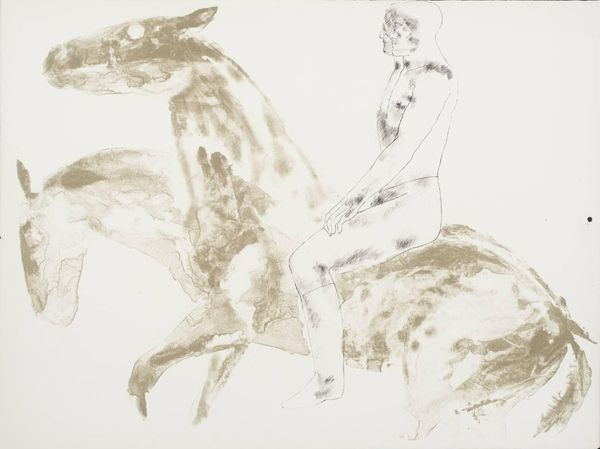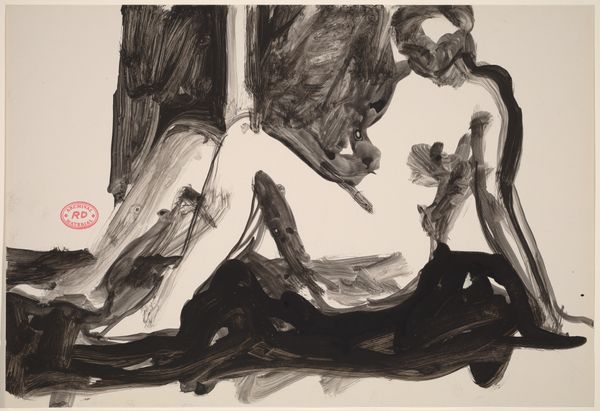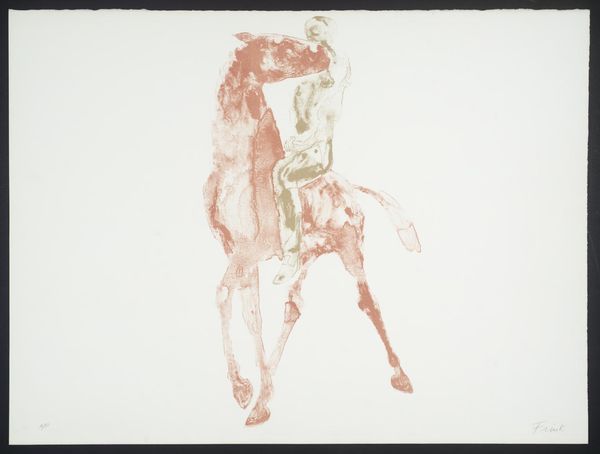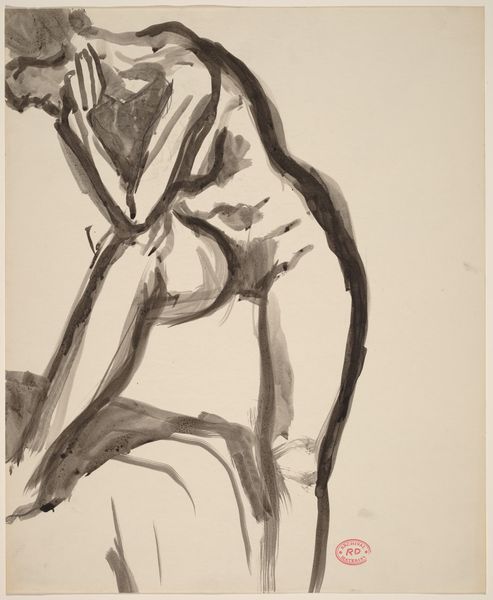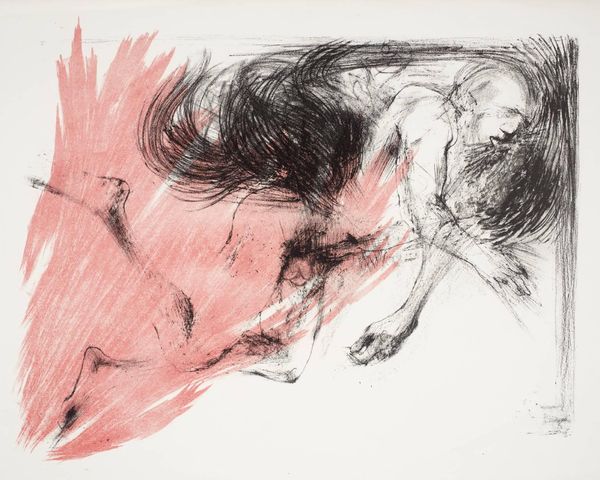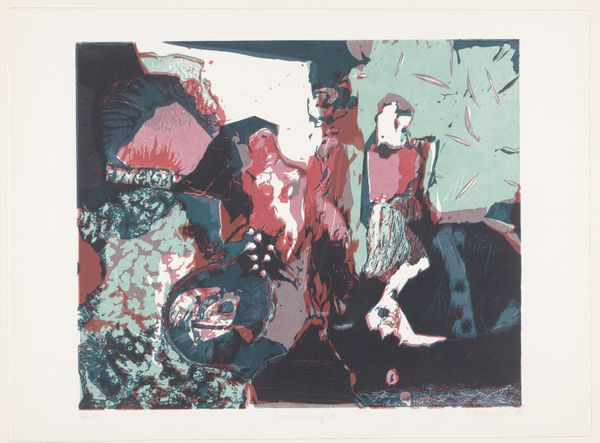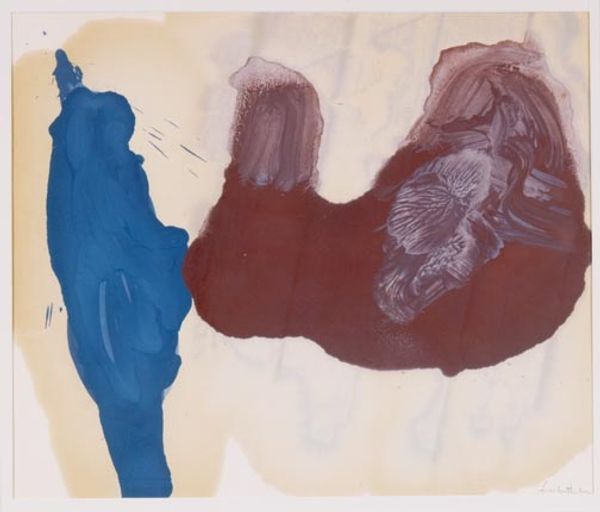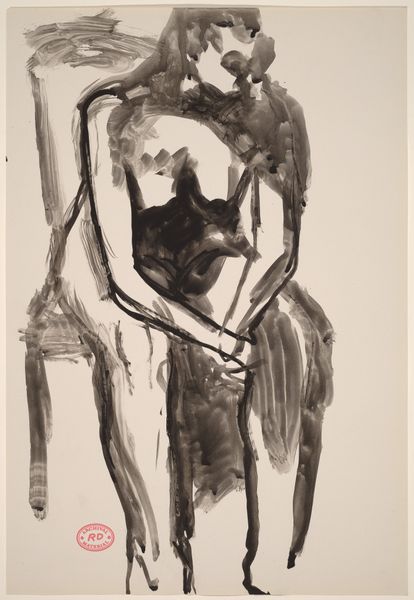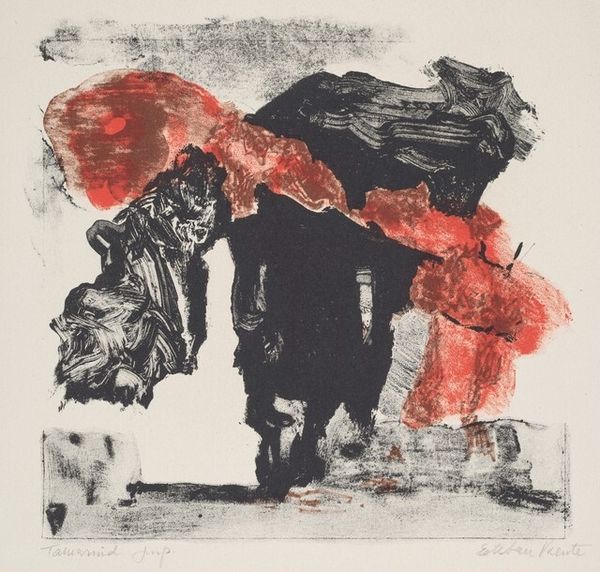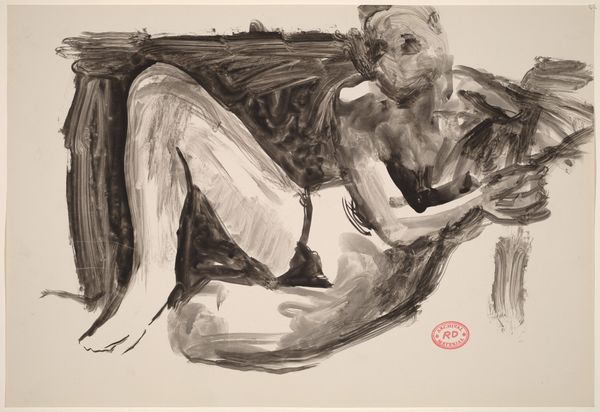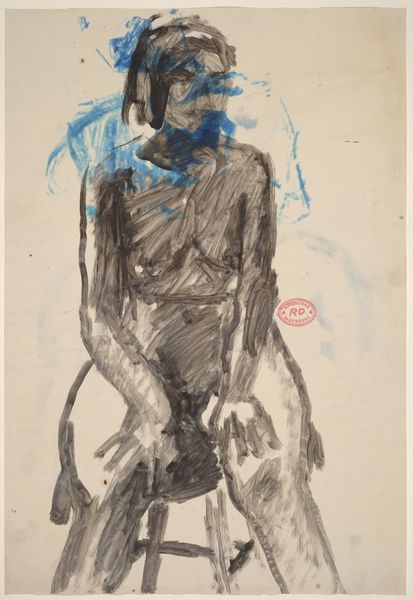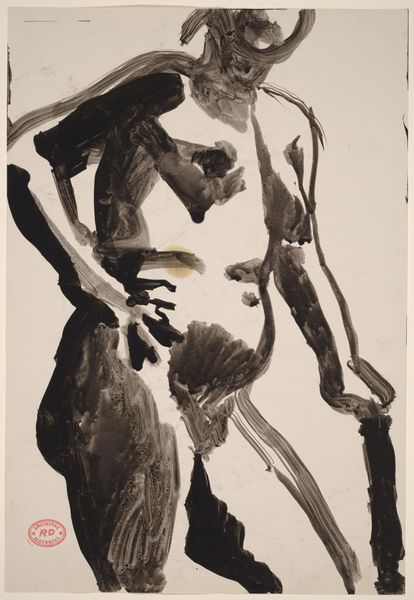
Dimensions: image: 596 x 798 mm
Copyright: © Frink Estate | CC-BY-NC-ND 4.0 DEED, Photo: Tate
Curator: This is Dame Elisabeth Frink's "Man and Horse III," currently residing in the Tate Collections. It strikes me as quite imposing. Editor: The monochromatic scheme, offset by the stark white background, certainly commands attention, doesn't it? The way Frink uses line and form is compelling. Curator: Indeed. Consider how the labor involved in producing prints like this one makes art more accessible, less precious. How does its imagery reflect post-war anxieties about the body and power? Editor: True. It's not just about the physical presence, but about Frink's mastery of composition—the tension created by the stark lines of the man against the amorphous form of the horse, the overall symmetry. Curator: I think the social context of Frink's work, particularly her engagement with masculinity and dominance, makes it truly resonate. It reflects the cultural moment it came from. Editor: Perhaps. But I am drawn to the interplay between figuration and abstraction, between anatomical precision and ethereal form. Regardless, it's a striking piece that invites contemplation.
